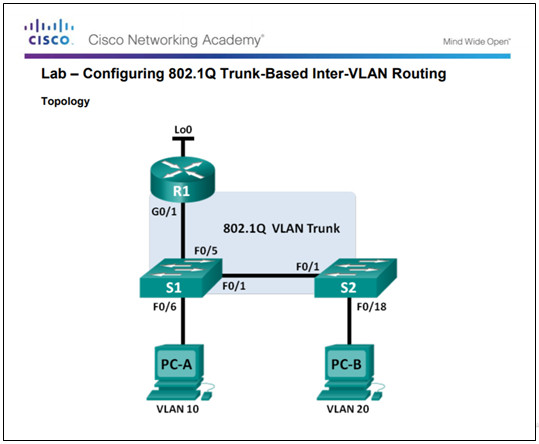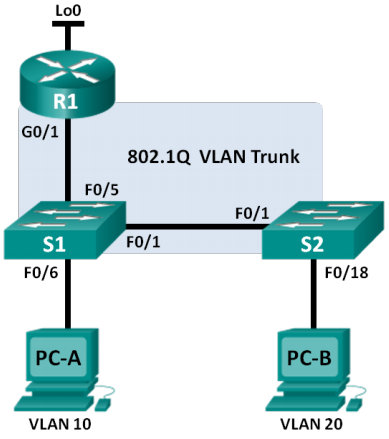
- CONFIGURE LEGACY INTER VLAN ROUTING SERIAL
- CONFIGURE LEGACY INTER VLAN ROUTING PASSWORD
- CONFIGURE LEGACY INTER VLAN ROUTING WINDOWS
SW2(config-if-range)# switchport trunk native vlan 105 %LINEPROTO-5-UPDOWN: Line protocol on Interface FastEthernet0/4, changed state to up %LINEPROTO-5-UPDOWN: Line protocol on Interface FastEthernet0/4, changed state to down %LINEPROTO-5-UPDOWN: Line protocol on Interface FastEthernet0/3, changed state to up %LINEPROTO-5-UPDOWN: Line protocol on Interface FastEthernet0/3, changed state to down SW2(config-if-range)# switchport mode trunk By default all the VLANs are allowed through trunk ports but we can use the switchport trunk allowed vlan command to specify the vlans that are allowed through trunk ports. Remember that by-default native VLAN is 1 but we have changed native VLAN to be 105 as a security measure. The switchport trunk native vlan command sets the native vlan to 105.

In above configuration commands, I have selected both fastEthernet0/1 and fastEthernet0/2 interfaces using interface range command and then the command switchport mode trunk will set these interfaces in trunk mode. SW1(config-if-range)# switchport trunk allowed vlan 100-105 SW1(config-if-range)# switchport trunk native vlan 105 SW1(config-if-range)# switchport mode trunk SW1(config)# interface range fastEthernet 0/1-2 Now, we will configure links between these switches as Trunk. Switches SW1 and SW2 are connected to Core switch using 2 links. You know that the trunk links are used to carry the traffic belonging to multiple VLANs. To assign an interface to VLAN, you need to go to each interface and tell it which VLAN to be a part of. VLANs are now created but each VLAN is unusable until any switchport is assigned to it. Remember that you cannot modify or delete default VLANs i.e. You can see the VLANs 100, 101 and 105 listed along with other VLANs that exists by default on switch and every interface is assigned to VLAN 1 by default. Core# show vlan briefġ00 Sales active 101 HR active 105 Management active If you want to see the brief details about VLANs, you can use show vlan brief command as shown below.

VLAN Type SAID MTU Parent RingNo BridgeNo Stp BrdgMode Trans1 Trans2 This command will show you complete details of VLANs.ġ default active Fa0/3, Fa0/4, Fa0/5, Fa0/6 Now, lets take a look at VLANs on switch using show vlan command.

The command vlan followed by a number will create a VLAN and then name command will assign the descriptive name to VLAN, however name command is not mandatory. End with CNTL/Z.Ĭore(config)# vlan ? WORD ISL VLAN IDs 1-4094Īccess-map Create vlan access-map or enter vlan access-map command mode Create VLANs Core#conf tĮnter configuration commands, one per line. I will create the VLANs on Core switch and configure it as VTP server so that it can propagate these VLANs to other switches.
CONFIGURE LEGACY INTER VLAN ROUTING WINDOWS
Active Directory in Windows Server 2012.Active Directory Sites and Organizational Units.Active Directory Forest and Domain Design.N2 - OSPF NSSA external type 2, E1 - OSPF external type 1,Į2 - OSPF external type 2, * - candidate default,ĭestination Gateway Dist/Metric Last Change O - OSPF, IA - OSPF inter area, N1 - OSPF NSSA external type 1, Switchport trunk allowed vlan 10,12,14,16ī - BGP, IN - internal BGP, EX - external BGP
CONFIGURE LEGACY INTER VLAN ROUTING PASSWORD
Username admin password **** role sysadmin

! Last configuration change at May 13 06:44:42 2019 I have ready just about every post I can find about setting up VLAN routing and have tried many different configs but nothing works. The problem is I am not able to ping the gateway for any of the other VLAN interfaces and I am also not able to ping any of the hosts that are deployed within those other VLANs. When I set one of the ports on the switch to an access port, plug myself into it, and assign myself an IP from that subnet I am able to ping the gateway for that VLAN as well as all of the hosts in the same VLAN.
CONFIGURE LEGACY INTER VLAN ROUTING SERIAL
If I connect to the switch with the serial cable I can ping all of my VLAN interfaces from the switch as well as all of the hosts that are deployed within each of the VLANs. I have setup inter VLAN routing before on Cisco switches and I have never had trouble getting it to work. I have been trying to get this working for about 16 hours now and I have no idea whats wrong. I am hoping somebody here can help me out.


 0 kommentar(er)
0 kommentar(er)
